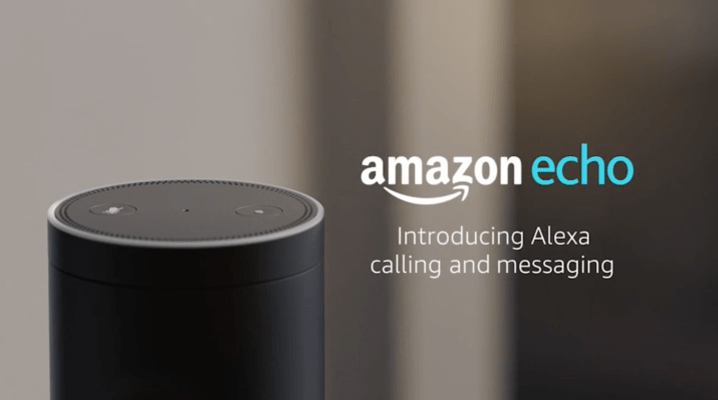Amazon may have flopped with the Fire Phone, but don’t count it out of the telephony game just yet. Alongside Amazon unveiling its newest Echo device earlier today — the Echo Show with a seven-inch video screen — the company also announced Alexa Calling, free voice calls and messaging services that you use through all Echo devices (not just the Show), as well as for users of the Alexa app for smartphones.
The feature is marked as “coming soon” on the Alexa Calling product page, but we have been told by an Amazon spokesperson that, in fact, it’s coming online later today. In other words, well ahead of the newest Echo shipping.
Meanwhile, users of that newest Echo, the Echo Show, which has the screen and video feature, will get added services, it seems. The one that has jumped out at me first is called “Drop In” — which lets you make a call to someone without them even answering the phone first. Think of it as the 21st century tech equivalent of someone coming to your house and either peeking through the front window as they’re knocking, or maybe just walking straight in, 1970s sitcom-style.
Alas, this is not being positioned as something mildly intrusive, nor as a creepy big brother-style service (which is the worst-case scenario and one that Amazon has been taking pains to avoid in all of its Echo and Alexa products). Rather, Amazon emphasizes that it is opt-in, and a way to communicate with only the very closest members of your family.
Examples of usage can include checking in on elderly relatives, or letting your family in another room know it’s time for dinner — or perhaps making sure you kid is really doing homework and not watching YouTube. Let’s see how people use it as it rolls out.
Amazon says that Alexa Calling can be used on any Echo device and the Alexa app once the user and the user’s intended contact have both enabled Alexa calling and messaging. In other words, for now (emphasis on for now; Amazon is nothing less than massively ambitious), it sounds like you can’t use your Echo Dot to call your friend’s landline. But you can use it to call or message your friend if she has a smartphone with the Alexa app downloaded (and Alexa Calling enabled).
(Interesting side note: This seems to be a very new use case for the Alexa app, which to date has mainly been positioned as a support for Echo owners, not a standalone app for other Amazon services. It could be laying groundwork for more services of that kind through the Alexa app.)
The messaging service, meanwhile, will be delivered as a visual message on the Show, and as a verbal message for other devices.
“You’ll hear a chime when you have a new message, and a green light ring will appear on your device,” Amazon notes. “You’ll also be notified in the Alexa App so you can stay in touch wherever you are.”
Alexa Calling is Amazon’s latest — but not its first — foray into communications services. The company acquired a conferencing startup called Biba last year and has incorporated its features into Chime, a new communications suite for businesses. Amazon also developed its own messaging service for Kindle owners in 2012, and since then has also opened up the platform to integrate with other messaging apps.
We’ve had numerous tips over the months and years about the company’s ambitions in social and messaging. To date, this has been something of uncharted territory for Amazon, the e-commerce and cloud services giant that has ridden on the back of other social networks but has never owned the experience from the ground up. This seems very much to fit in with that bigger strategy, too.
Adding voice and messaging here is a very interesting way to utilize the Echo. I’ll admit, it’s had a lot of novelty value in our house for all the skills you can enable on it — my kids love to make it meow and do all other kinds of silly stuff — but ultimately the Echo (and Amazon) might need more features that feel essential in order to really embed it in our lives. Adding voice and messaging communications does this by making it more of a central part of home communications.
Although we’ve heard a lot about how smartphones are replacing landlines, using smartphones indoors might not work for everyone. You may be charging it, or you may have bad reception, or you may just not want to use it at home. Services like this tap into the gap and could see us replacing yet more in our homes with an Amazon-powered service.
What is also interesting to me is how this once again chips away at and disrupts what has always been a steady and reliable business stream for telecoms carriers (one of which now owns TC, too). As fixed-line calls became commoditized and digital networks became better and faster, we saw the rise of Skype and a multitude of messaging services offering free voice calls.
Now, the emergence of yet another new service like Alexa Calling underscores just how comprehensively that business is ebbing away for the old stalwarts. The question is how and when and in what capacity Amazon and the carriers might still need each other.
